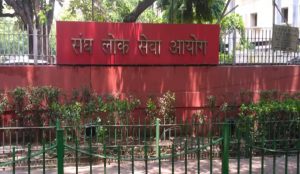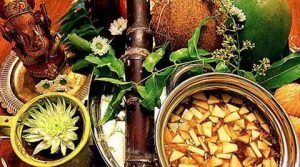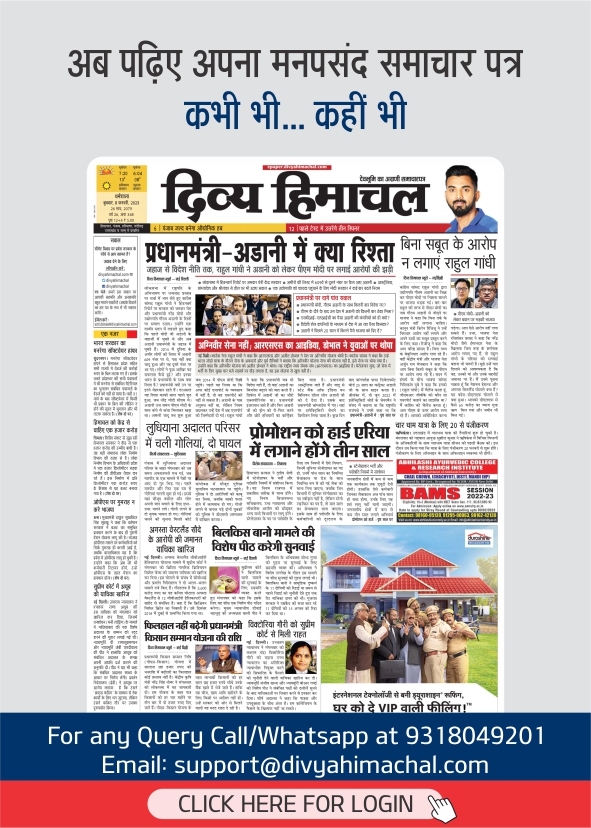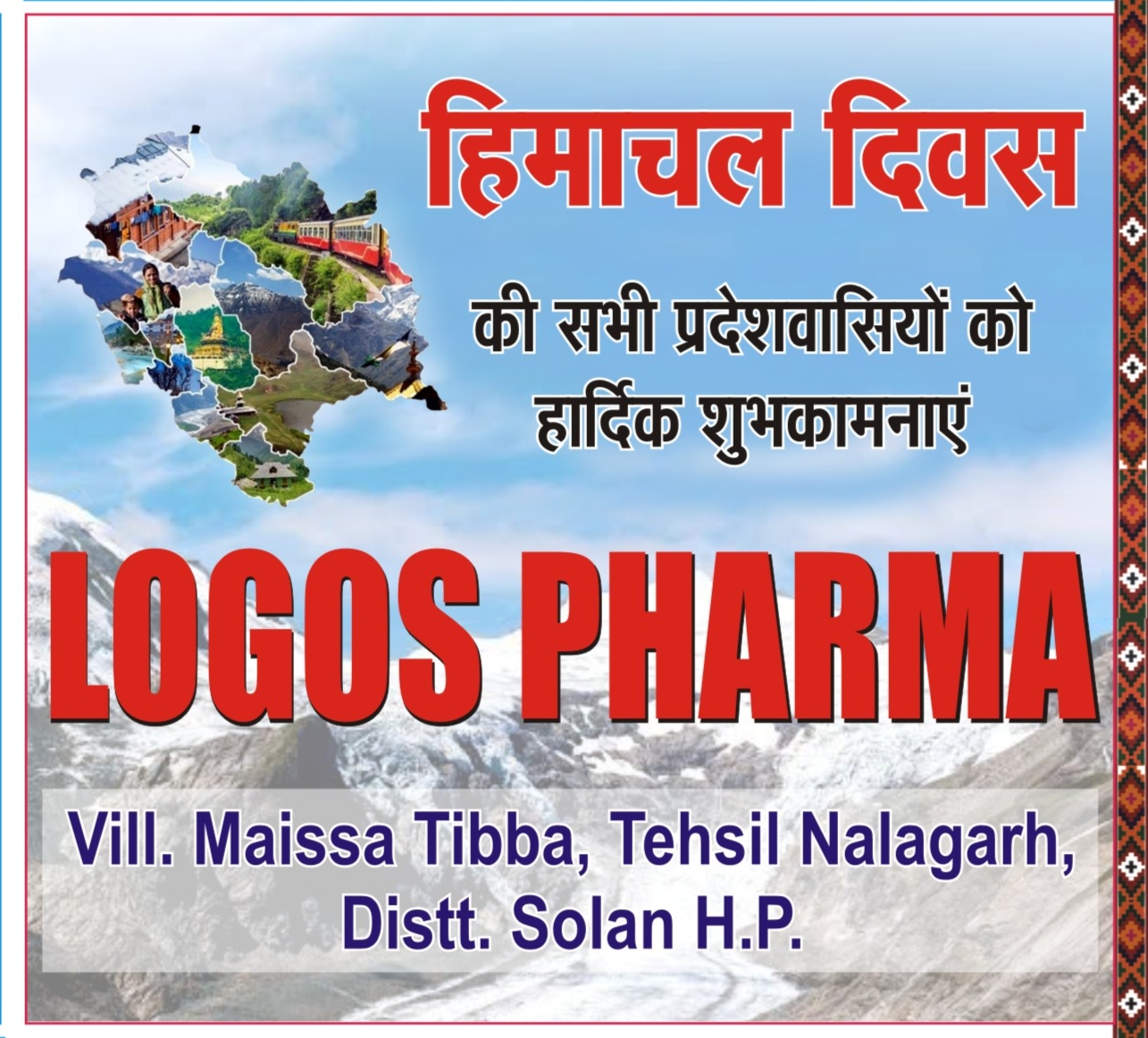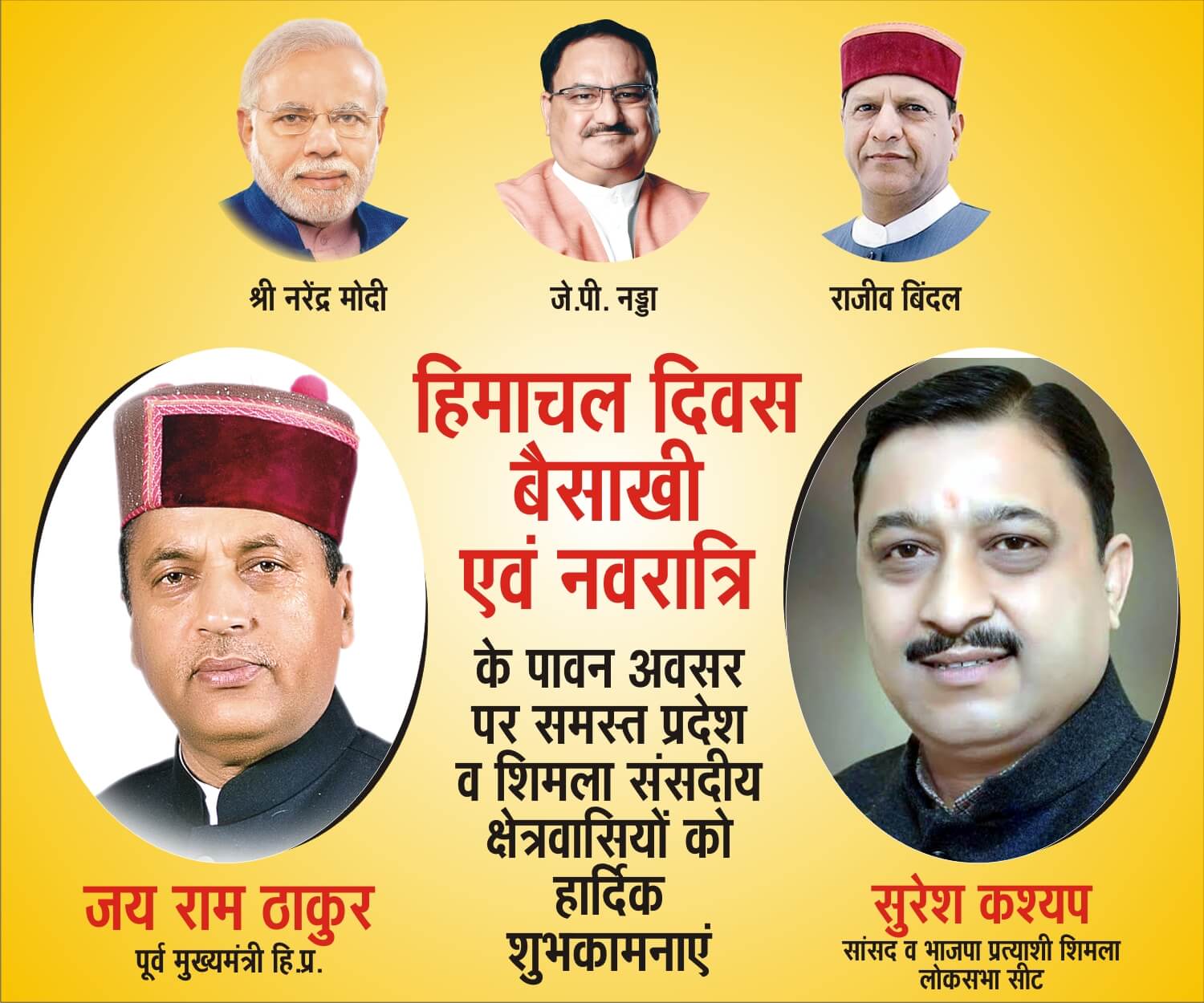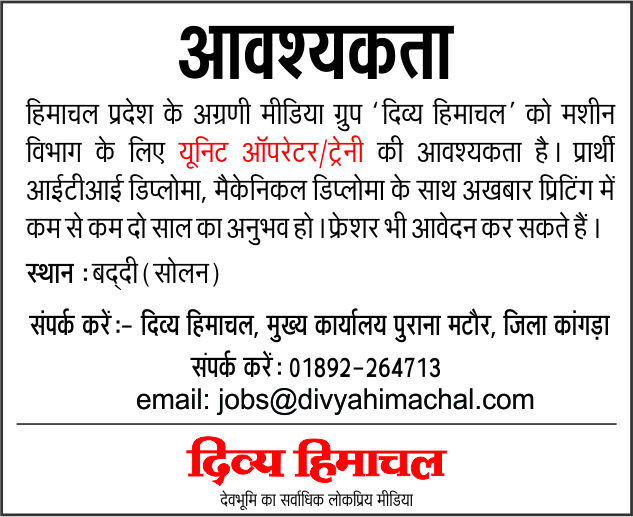Diminishing Cultural Folk Theater
Himachal This Week Team

Traditional Dholru Singing
Ey ji- pehla ja nan laina narayne da, nan
jinni sari duniya basai ey, pehla nan
Ey ji- Dua ja nan laina , mai bap da, nan
jinah dasya snsaar, dua, ja nan
Ey ji- Triya ja nan laina, guru apne da, nan
katde kayan jehre papan, triya ja nan
Ey ji- Hiyund ja giya ey, gharv apne nan
ayee rit sohe di bahar ey, pehla nan
Famous ‘Dholru’ Singing of Kangra
Cultural folk theater Dholru singing is performed on the occasions of Chaitra Sankranti that is performed traditionally. On the occasion, people from a particular community visit house to house to perform this rich cultural folk theater wishing people well being and a prosperous future. In return, people gift them food grains and other items. It’s a huge gesture to wish people by visiting their houses and this harmony is now on the decline, knowledgeable persons feel, stressing the need to conserve the tradition of Dholru singing.
Traditional Singers

 Circumstantial Impact On Folk Theater
Circumstantial Impact On Folk Theater
Different circumstantial happenings at different times, including rulers, power, attacks and others, had a deep impact on folk theater that had a story content. These incidents had direct or indirect impact on the society as there have been thinkers in different parts of the state who were aware towards such incidents. These sections had twin motives; to entertain people and earn a livelihood. During the principalities era, there has been a tradition to offer food grains and money to people who wrote songs and popularised the same among people. Gradually these creations became traditions. These have broadly classified as Jagar and religious, love, chaiti, Baren and parivarik sagas.
Importance In Lifestyle
These folk sagas have importance in diverse culture of Himachal. Enough indications are contained in different forms of folk theater to understand local history, administration, traditions, social circumstances and thinking. Folklores form integral part of the culture and there is little impact of education, science and other factors on the section that resides away from towns performing folk theater.
Conservation Is Necessary
Every now and then a question is raised that adopting old traditions is backwardness. However, knowledgeable persons feel that a tradition never becomes old as every era has its uniqueness. Every tradition has some speciality attached to it. The content that is right and good should be conserved while leaving asides other contents and developing science never advocates to discard traditions, they add.
* Present form of folk theatre has developed after many centuries. It is important to understand, read and consefve it
-Dr. Kuldeep Chand Agnihotri, Vice Chancellor, CUHP
* Families of traditional artists are also changing. It is our duty to conserve and protect whatever is good in Dholru singing
-Dr. Gautam Sharama Vyathit, Writer of ‘Dholru’ Book
Popular Folk Theatres
 Thoda: Imagery Fight
Thoda: Imagery Fight
Played with bow and arrow, Thoda is a battle folk-dance that is imagery of fight between Shathi and Pashi. It reminds what happened between Kaurvas and Pandvas in Mahabharta battle. A large open space is required to perform this folk theater in which two parties exchange sarcastic words also against each other. Its impressive martial art form that relies on one’s archery prowess in which blunted arrows are used. The archers are divided into two teams called Saathi and Pashi who believed to be descendants of the Pandavas and Kauravas. The target in this game is the region of the leg, below the knee, where the opponent aims his arrow.
Kariyala: Sheer Entertainment
Kariyala is most popular folk theatre in Shimla, Solan and Sirmour districts of Himachal. Presenting different colours, Kariyala depicts various moods, including joy, sorrow and others in daily lifestyle, and is staged by artists in villages. Their performance is aimed at entertaining people mostly during Diwali festival in winters. This folk theater is immensely popular in areas that lack other sources of entertainment. It is also considered to be an impromptu act that is staged without any written script. It is mostly based on social satire with an objective to provide entertainment. The folk drama starts in the evening.
Banthra: Funny Gestures
This theater form is popular in Mandi district that is believed to emerged during principalities era. It is a blend of dance, drama and music and the artists use dialogues and gestures. Folk instrumentalists, folk singers and dancers also perform during Banthra folk theater in which dialogues, actions and even dresses invoked humour. During the principality era, it was used to create awareness among people, and to educate them. This folk theater form had no script or dialogues established in advance and only a scheme for the act was planned.
Bhagat Theater Form
Practiced in Chamba and Kangra districts, this theater form is on the verge of extinction now as there are very few artists, known as Bhagatia, to perform. According to the legend, it originated from Raas Leela of Lord Krishna and spread to other parts including Himachal Pradesh and other states. In comparison to clowns performing during principalities, Bhagatia artists used to perform to entertain masses by visiting village after village. Mostly performed during evening, Bhagat folk theater is also performed during day time on demand or during marriage ceremonies. Bhagatias are dressed in funny costumes with no specific stage to perform the play that includes dialogues and gestures which charges atmosphere by entering the arena one by one. The play begins with dialogues and gestures. The subjects and themes of the play are selected to satirize the eccentricities of the society and to ridicule the universal and whimsical characters found in the locality.
Keep watching our YouTube Channel ‘Divya Himachal TV’. Also, Download our Android App







 Circumstantial Impact On Folk Theater
Circumstantial Impact On Folk Theater * Present form of folk theatre has developed after many centuries. It is important to understand, read and consefve it
* Present form of folk theatre has developed after many centuries. It is important to understand, read and consefve it * Families of traditional artists are also changing. It is our duty to conserve and protect whatever is good in Dholru singing
* Families of traditional artists are also changing. It is our duty to conserve and protect whatever is good in Dholru singing Thoda: Imagery Fight
Thoda: Imagery Fight
